CONSERVATION
Over 25 years’ experience in stained-glass conservation and repair
Stained Glass Conservation
Below are some sample projects I have undertaken, highlighting different levels of intervention in order to repair successfully and sustainably for the client.
The Arms of Nicolaas de Ruterious, Bishop of Arras
Repair detail from the conservation of Window sXII
From the Charterhouse of Louvain, Netherlandish (Brabant), c.1520-5
Mixed level intervention
Currently on display in the Sacred Silver & Stained Glass Galleries, V&A Museum, South Kensington, London. Repairs were required to this panel to make it structurally sound for long-term gallery display. The advantage of displaying panels in a museum environment is that they are no longer being exposed to the weather and can be held in a more controlled environment. This often allows a more purist and less interventive repair approach to be taken, and thus, it was possible to retain a great deal of the extant lead structure. The three images below show the full-size panel, both before and after treatment, as well as the in-tact lead matrix, temporarily removed during the repair work.
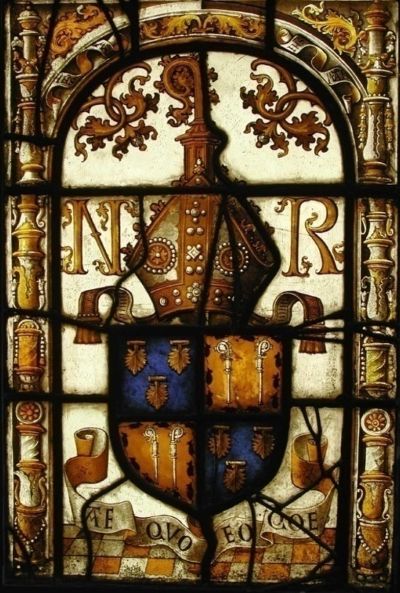
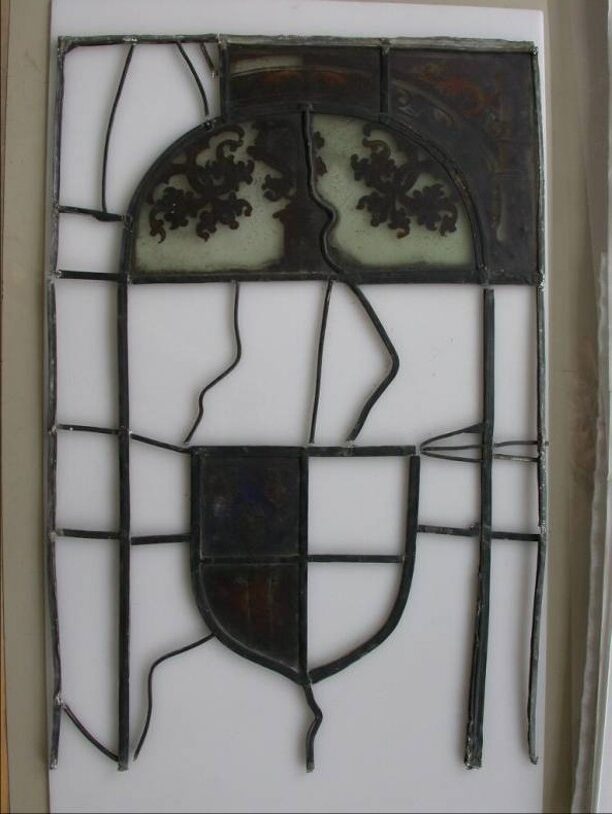
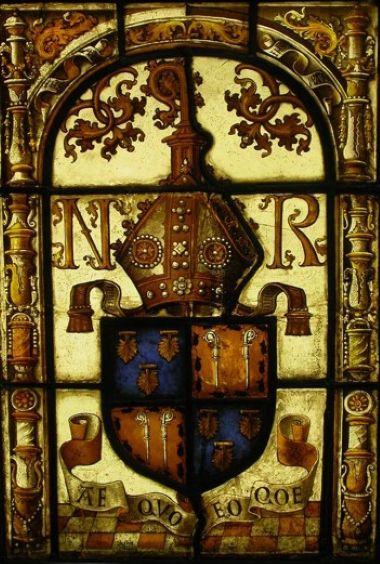
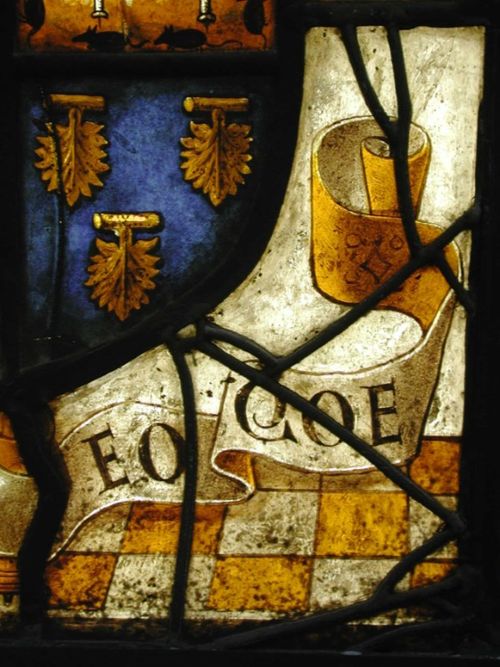

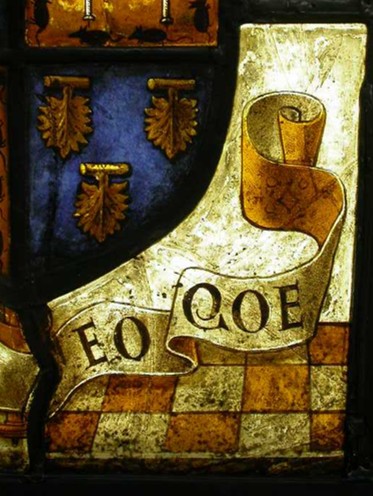
The three images above show where a number of obtrusive previous-repair-leads were removed, and the resulting gaps filled with colour-matching conservation-grade epoxy resin. The surface of the cured epoxy resin was then retouched with colour-matching acrylic paints, and the repaired piece was reinserted into the lead matrix. Finally, the panel was re-soldered, and fitted into a supportive framework. This method of repair has given much more visual clarity and balance to the panel, whilst keeping as much of the original fabric as possible.
Kendal Parish Church, Cumbria
Repair detail from the conservation of Window sXII
High level intervention
BEFORE CONSERVATION CONDITION, AND TREATMENT APPROACH
Vandal damage resulted in the loss of a large portion of this small window section below. |It is part of a larger repair programme of two windows, each window consisting of two ‘lights’ and tracery openings above. I was sub-contracted to work on the entire project for a 4 month period, by Eden Stained Glass Workshop in Cumbria. My responsibilities for this project were as main conservator, glass-painter, glazier, photo-editor, project supervisor, and teacher to apprentices.
There was a great deal of missing glass, due to an impact attack, as well as multiple breaks in the remaining glass sections.
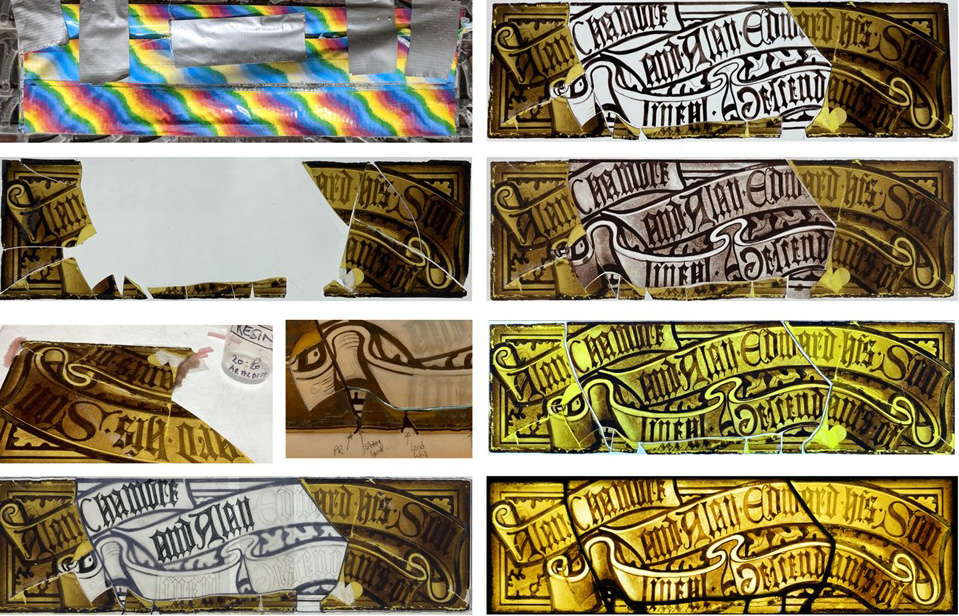
The image above shows the process necessary in order to reconstruct the panel, to make it structurally sound and ready for re-fitting into the building, alongside the other conserved panels in the window. The process firstly involved edge-bonding the existing original fragments, and filling any small gaps with conservation grade epoxy resin. Then, a new piece of clear glass was cut to fit the central gap. It was painted with traditional glass-paint pigments, and fired in the kiln to make permanent. After this a matching (yellow) silver-stain was applied to the back of the glass, and kiln-fired. I was able to draw the template for the missing lettering accurately by referring to an archive photo of the window, luckily taken a number of years before it was damaged. When all the components had been completed they were finally leaded together. It was important to divide the new and old sections of the panel with the thin lead came section, so as to clearly identify the newly painted section, to make the treatment reversible, and not compromise any of the original fabric.
19th Century tracery panels, made by Hardman’s & Co. Birmingham
From Pocklington School, Pocklington, East Yorkshire
Low level intervention
Here I am highlighting work to six tracery lights, out of a total of 28 panels (eight lancets of two panels each, & twelve pieces of tracery).
They were removed from their original siting at All Saints, Emscote, Warwickshire, when the church was demolished in 1967. They were donated to Pocklington School in 2014 by school governor Darrel Buttery. Originally made by Hardman’s & Co., based in Birmingham; an extremely successful and well known company who began making stained glass in 1844 and closed in 2008. The firm grew to prominence through the combined talents of Gothic Revivalist Augustus Pugin, who worked as chief designer, and John Hardman, who manufactured his designs. After about 1849 Pugin’s nephew, John Hardman Powell took over the design role.
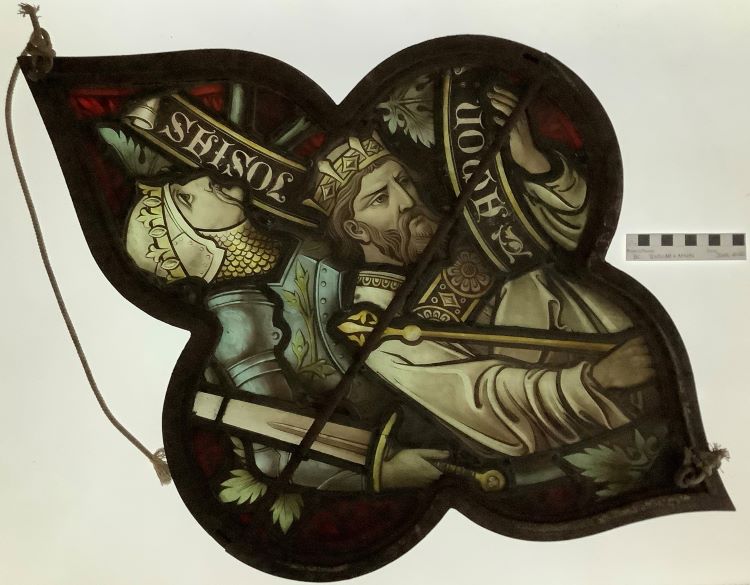
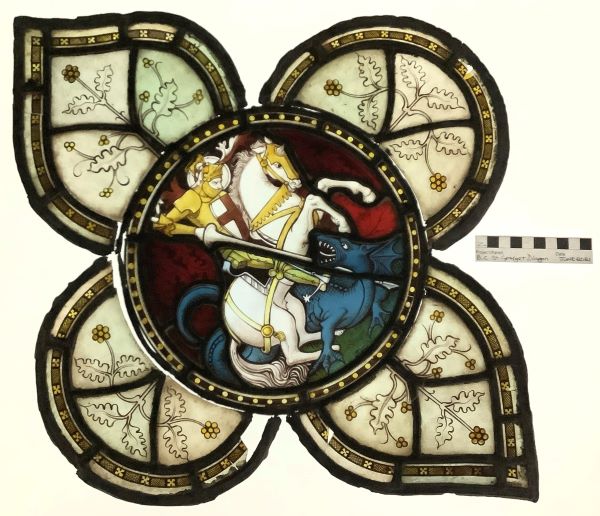
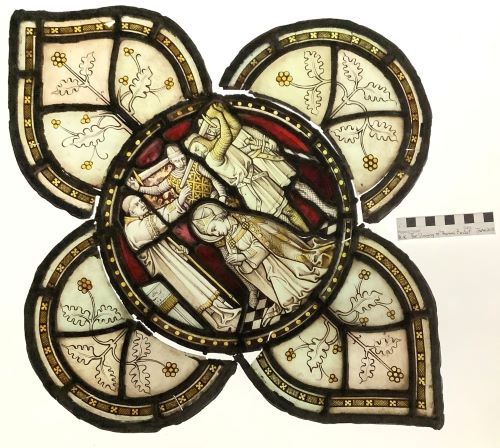
ABOVE: A selection of sample panels, BEFORE treatment, in transmitted light
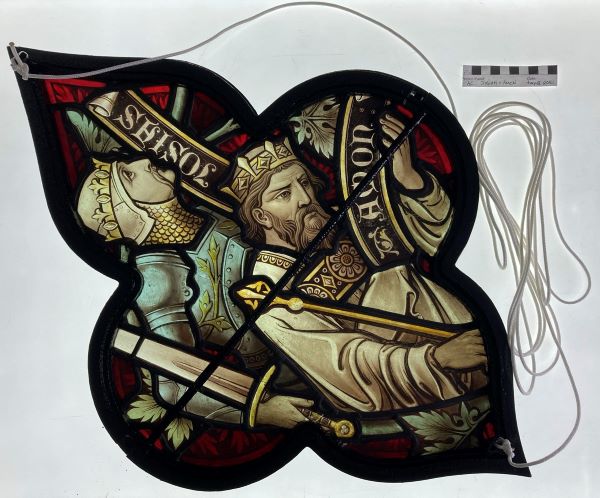
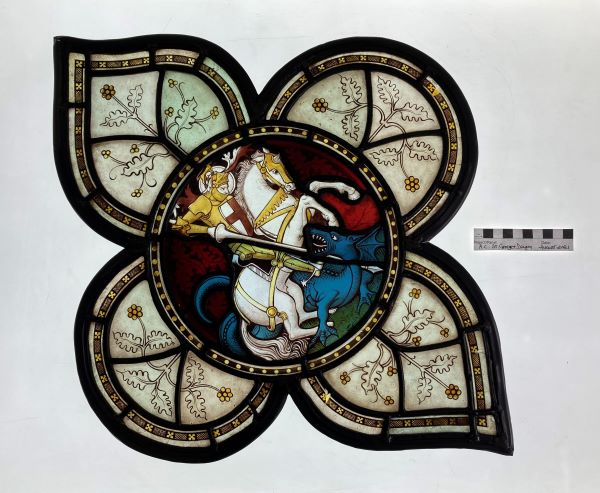
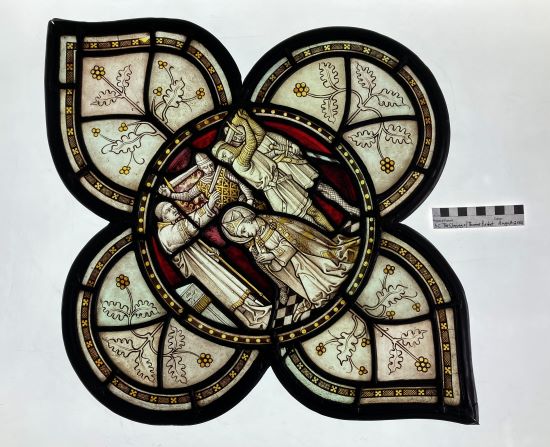
Above: Sample panels, AFTER treatment, in transmitted light
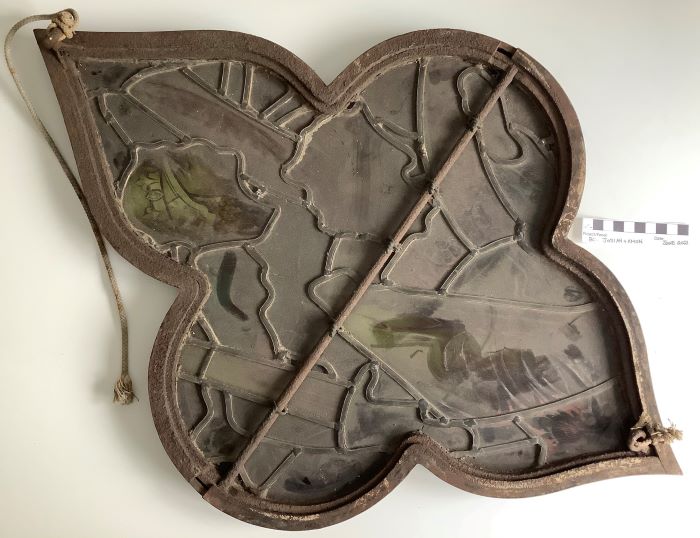
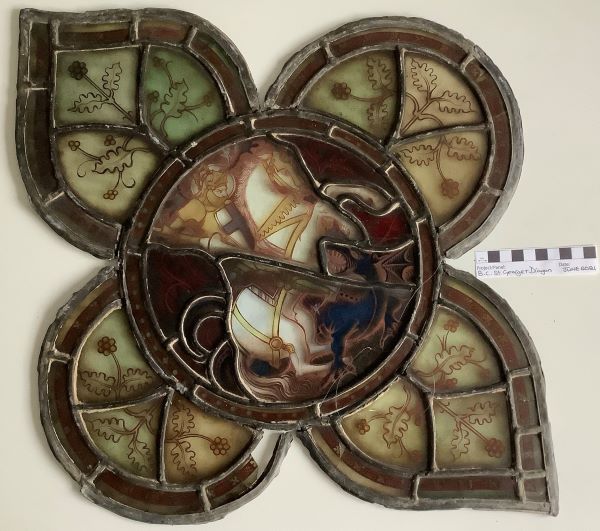
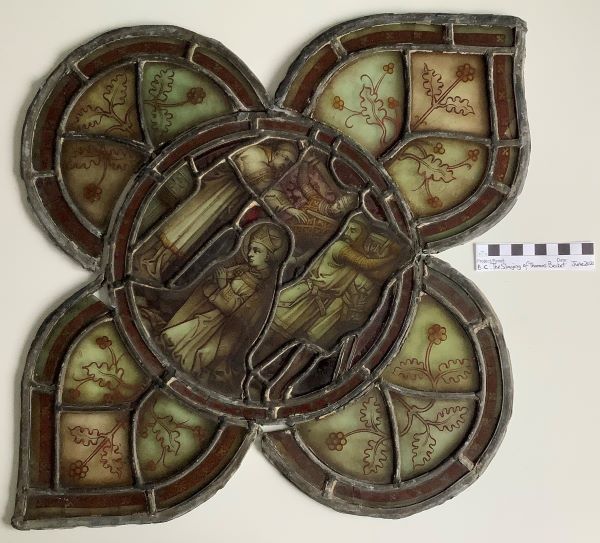
ABOVE: Sample panels, BEFORE treatment, in reflected light
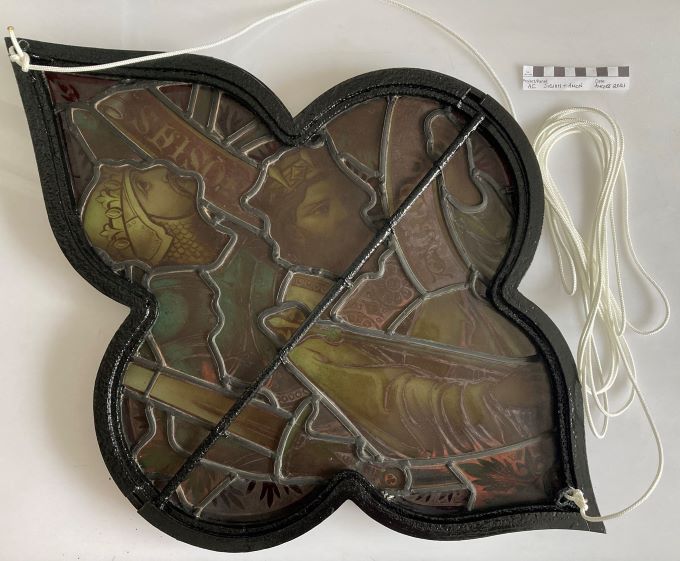
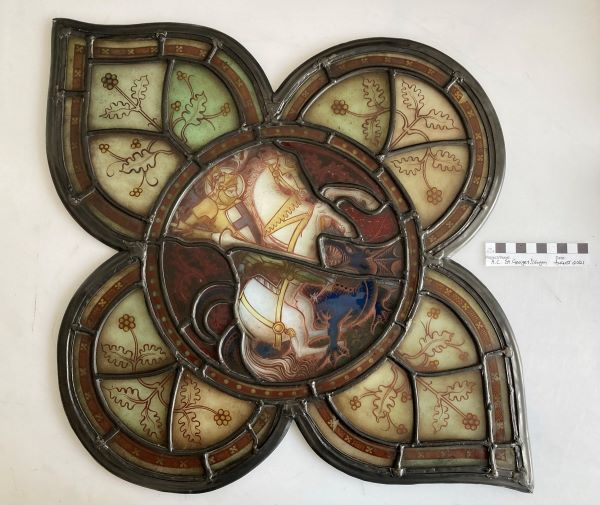
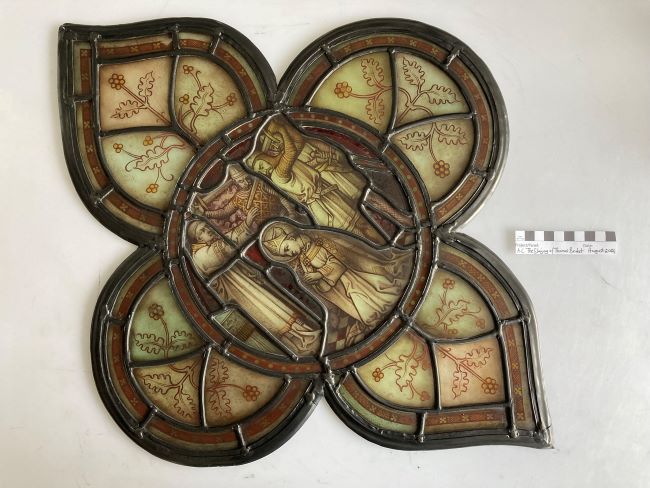
ABOVE: Sample panels, AFTER treatment, in reflected light
The panels were intended for internal display in the school library, after being in storage for many years. A purist conservation treatment approach could be taken, as the panels would not be exposed to the elements and no longer needed to function as a weather-guard. There was low level damage throughout the panels, with localised areas of concern. Therefore only localised in-situ repairs were necessary, which meant limited intervention & risk to the fabric, and a minimised the cost for the client.
Surface accretions were cleaned with a soft brush and/or cotton wool, with a solution of ethanol and water 50:50.Multi-cracked glass pieces were edge-bonded with conservation-grade epoxy resin or silicone. The repair choice was decided upon piece by piece once the panels had been inspected more closely on the bench. Any loose or brittle leaded light cement was removed, then any gaps found between the lead and the glass were hand-cemented to re-strengthen the panels. Finally the surface lead was blackened to consolidate the aesthetic and give some protection to the brittle/dry lead.
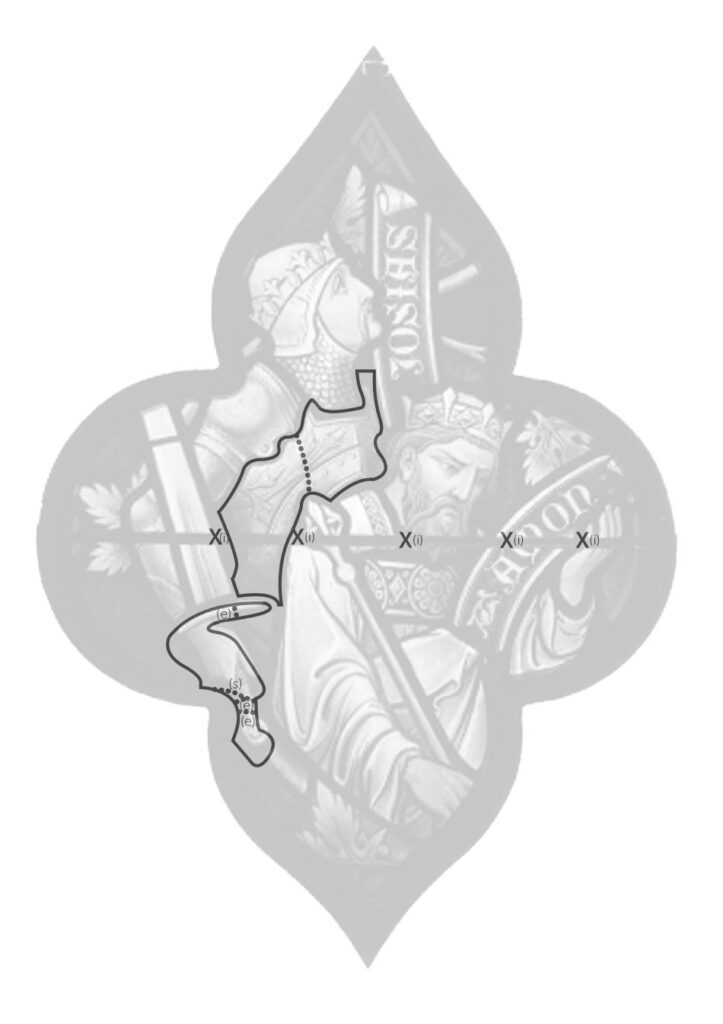
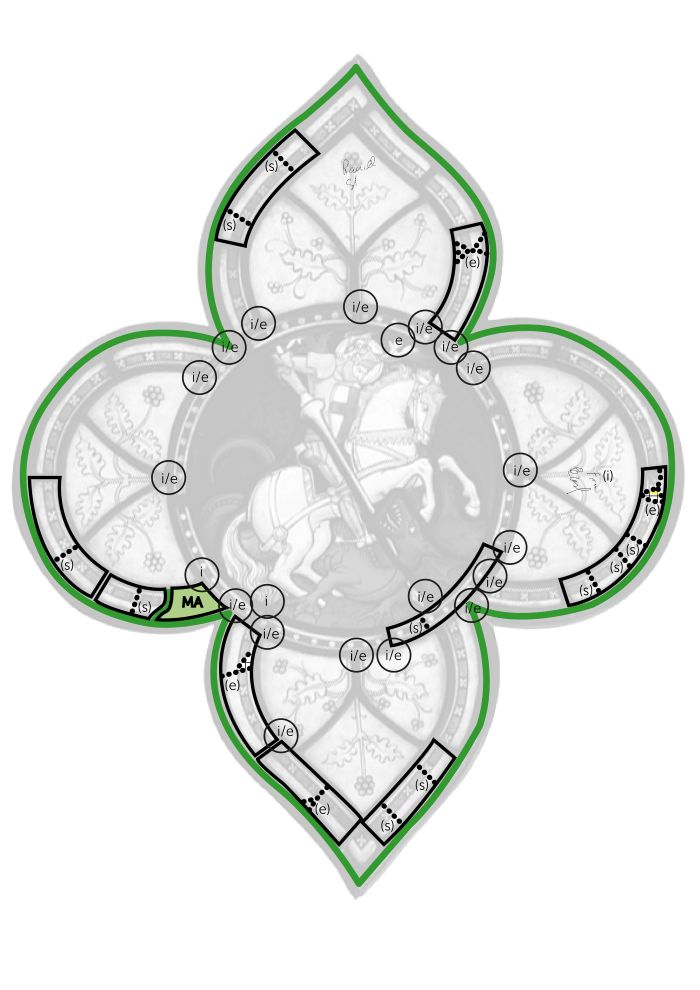
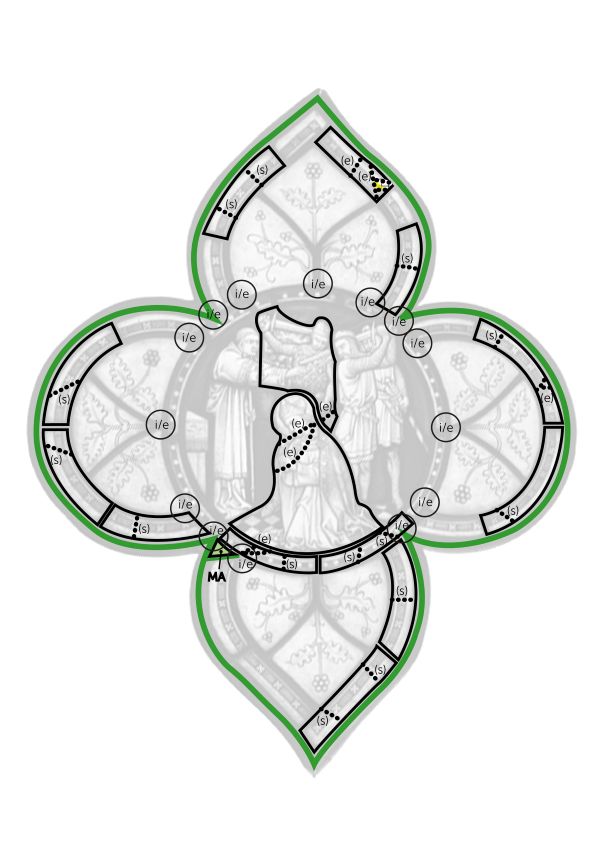
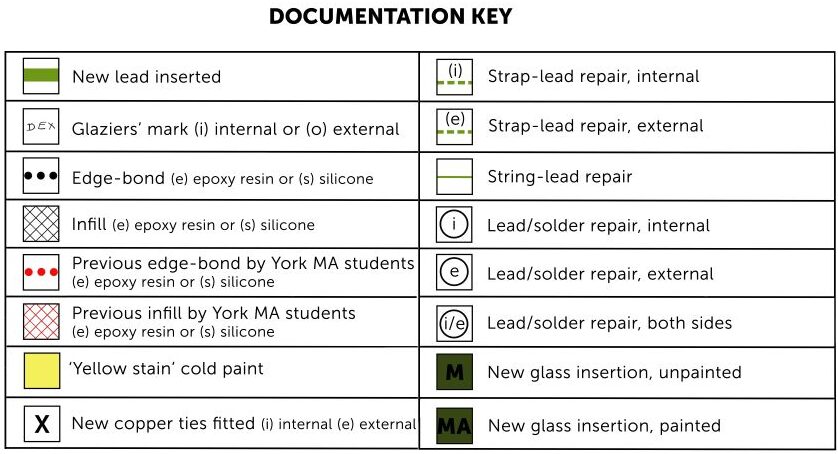
Examples of post-treatment digital documentation, which can be tailored to the scale and cost of a project. This very accessible visual format immediately shows the extent and type of repair work carried out. The same can be applied to before-conservation condition diagrams.
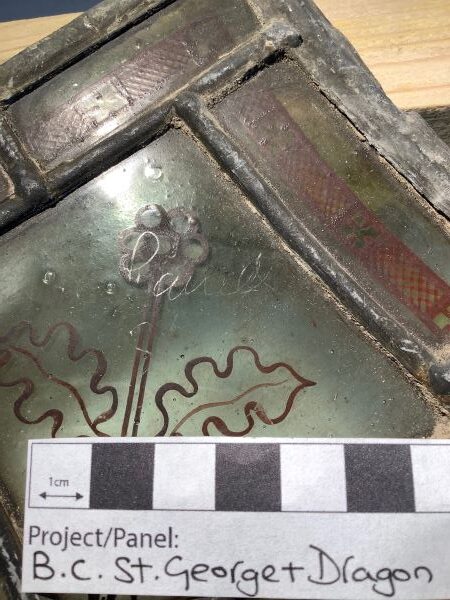
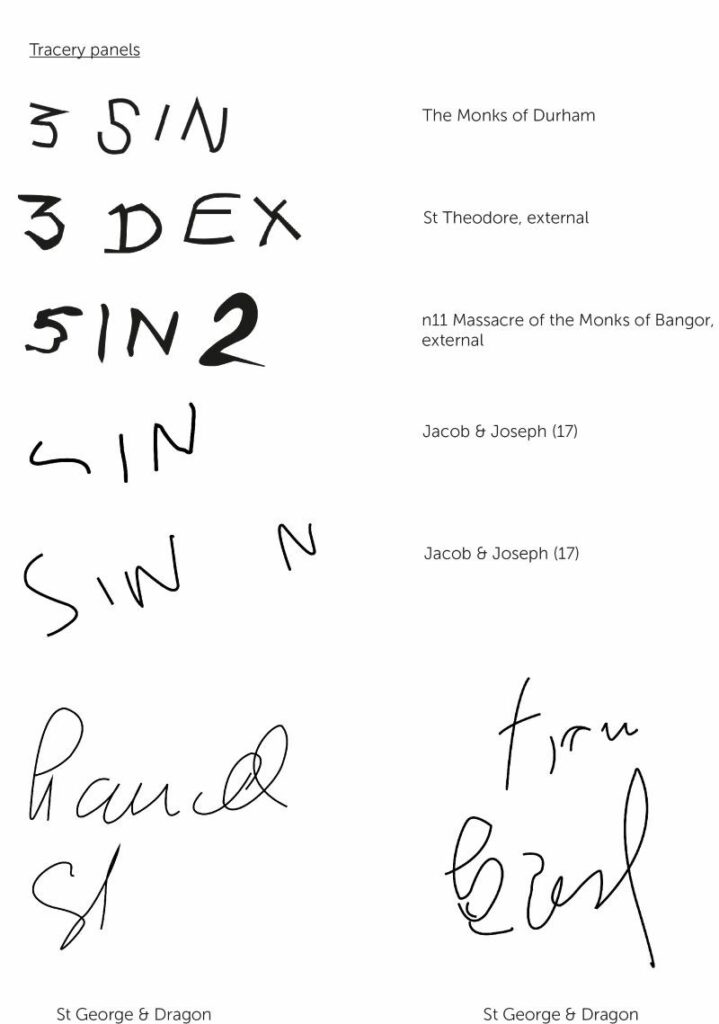
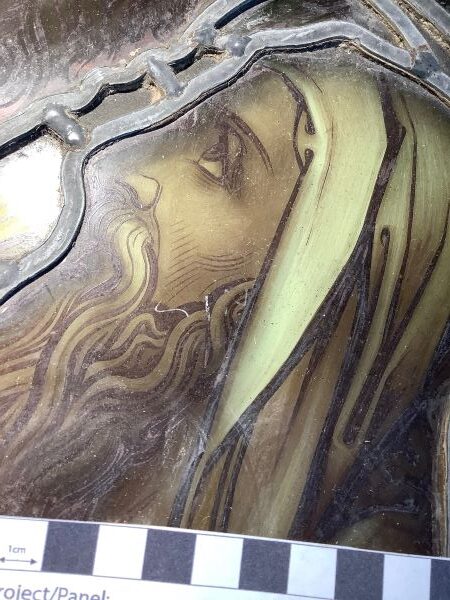
ABOVE: Glaziers markings found on the internal and external glass surfaces
With regard to the conservation and repair of stained glass, each situation is different and will require its own considered conservation approach. There are a number of options to consider: –
- In-situ/remedial repair –low level intervention
- Part in-situ/remedial repair, and part dismantling – mixed level intervention
- Complete dismantling of panels – high level intervention
- Preventive/passive conservation – low level intervention
I believe in conservative repair, where as little intervention as possible, and as much as is necessary is the best way to maintain the authenticity and integrity of the stained glass. I follow national and international guidelines for stained glass*, and strictly adhere to the following philosophical considerations, in order to determine a repair strategy for stained glass, and carry out successful treatment: –
- Each situation is unique, no size fits all
- Reversibility is key
- Respect all layers and periods of intervention, as part of the evolving nature of a panel
- Take an honest approach with repair techniques
- Treatment & intervention must be fully justified and backed up by research & evidence
- Always seek to protect and preserve, to retain the authenticity of the work of art.
- Be mindful of national and international guidelines on the ethics of conservation.
- Provide full documentation of treatment carried out.
*GUIDELINES FOR THE CONSERVATION OF STAINED GLASS
- Corpus Vitrearum Guidelines for the Conservation and Restoration of Stained Glass Second edition, Nuremberg 2004
- The SPAB Manifesto
- Conservation Principles, Policies & Guidance, English Heritage/Historic England, London, 2008.
- Stained Glass Windows, Dealing with Environmental Deterioration, Historic England
- Burra Charter
- Venice Charter
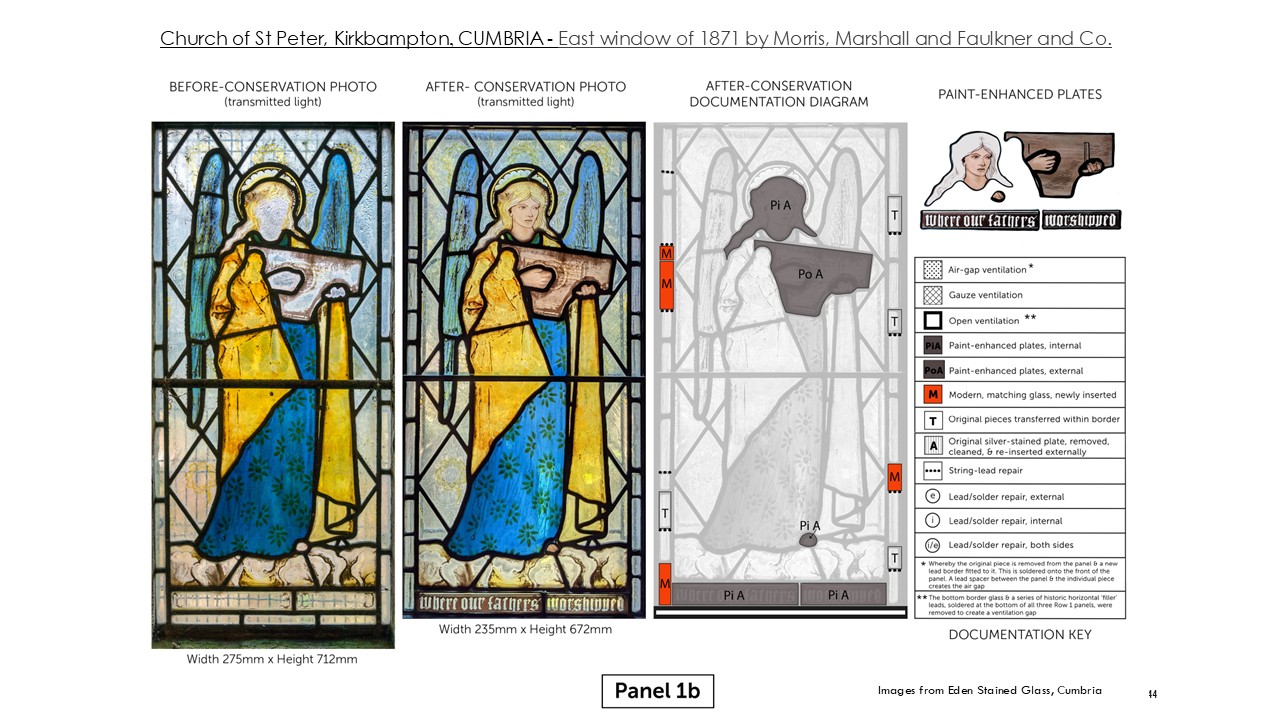
CONSERVATION & REPAIR
Please get in touch if you would like to know more about repairs to your stained glass.
